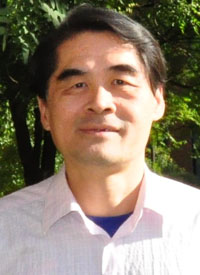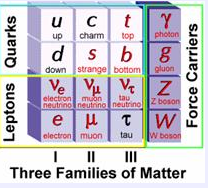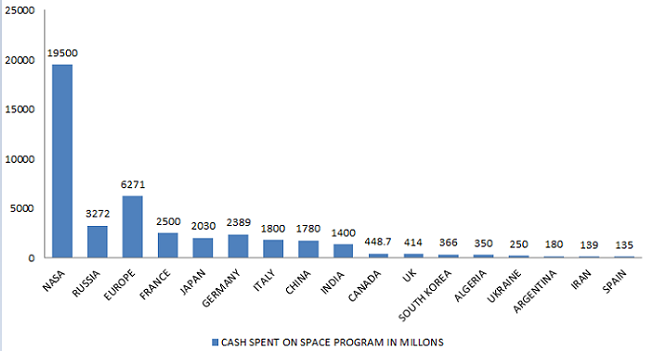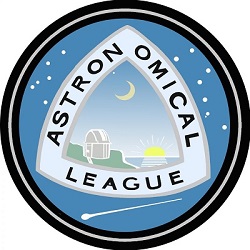Theme: The future cannot be predicted, but future can be invented!!
Astronomy Congress 2018
Astronomy Congress 2018 aims to bring together a multi-disciplinary group of scientists and engineers to present and exchange breakthrough ideas relating to Early Universe, Dark Matter and Dark Energy ,Astronomy, Gravitational Physics, Particle and Nuclear Astrophysics, Large-Scale Structures, Stellar Formation and Evolution, Observational Astronomy and Astrophysics, Celestial Mechanics, Theoretical Astronomy and Astrophysics, Interdisciplinary Studies, Space Observation and Exploration, Structure and Evolution of the Cosmos, Unsolved Problems in Astronomy. It promotes top-level research and to globalize the quality research in general, thus making discussions, presentations and contributions more internationally competitive.
Importance and Scope:
The existence of the Earth's galaxy, the Milky Way, as a separate group of stars, was only proved in the 20th century, along with the existence of "external" galaxies, and soon after, the expansion of the Universe, seen in the recession of most galaxies from us. Modern astronomy has also discovered many exotic objects such as quasars, pulsars, blazars, and radio galaxies, and has used these observations to develop physical theories which describe some of these objects in terms of equally exotic objects such as black holes and neutron stars. Physical cosmology made huge advances during the 20th century, with the model of the Big Bang heavily supported by the evidence provided by astronomy and physics, such as the cosmic microwave background radiation, Hubble's law, and cosmological abundances of elements. Space telescopes have enabled measurements in parts of the electromagnetic spectrum normally blocked or blurred by the atmosphere. The core aim of Astronomy 2018 conference is to provide an opportunity for the delegates to meet, interact and exchange new ideas in the various areas of Astronomy and related fields.
Target Audience:
- Researchers
- Scientists
- Astronomers
- Astrophysicists
- Biologist
- Physicists
- Chemists
- Space Scientists
- Doctors
- Writers
- Professors
- Students
Track 1: Astronomy
Natural Science is a branch of Science which explains the natural phenomena with description, prediction, and understanding based on observational and empirical evidences. Astronomy is the Oldest of natural sciences and an effort to explain the origin of various objects and their evolution. According to NASA (National Aeronautics and Space Administration) Astronomy is the study of “stars, planets and space”. It is a growing field in research and development and almost every day a new discovery is being made. Various questions like – How did galaxy formed? How was sun created? How long does it take to travel from one planet to another? How many solar systems are there in this universe? What is Higgs Boson? How Did the First Quasars Form? And so on….. Finally have answers, thanks to astronomy.
The early civilizations in history such as Greeks, Egyptians, Nubians, Iranians, Chinese, and Indians performed methodical observations of the night sky to make calendars. So, in 20th century the field of professional astronomy was split into two branches
OBSERVATIONAL Astronomy and THEORETICAL Astronomy.
Observational Astronomy, the data is acquired from observations of astronomical objects which are then later analyzed via basic principles of physics.
Theoretical Astronomy on the other hand bends towards computational or analytical models to explain an astronomical objects as well as phenomena.
Both the fields are related to each other as theoretical astronomy explains observational results and vice versa.
In this session of astronomy, latest research trends and the existence of Planets, stars, sun,moon,galaxies etc., will be discussed.
Track 2: Astrophysics
Astrophysics is the branch of astronomy that incorporates the basic principles of physics and chemistry to study and give out observations and understandings on objects like sun, moon, planets, galaxies, nebulae, black holes, and all remaining objects that drift in cosmos. Astrophysics is also called as “Space Science”. The role of an Astrophysicist is to understand the universe and our place in it. They work on one goal and that is to discover how this universe works, how did it all begin and how did it evolved.
Track 3: Computational Astrophysics
Many areas in physics rely on computational techniques to study the dynamic evolution of various complex physics problems. All the stimulations performed by the computer should be precise and timely. To make sure that happens, Computational Astrophysics was introduced in the field.
Various Important techniques that are used in computational physics are “Particle-in-cell, particle mesh, N-body simulations, Monte Carlo methods, and grid-free & grid-based methods for fluids.
To perform the above task both hardware and software should be at its ace. A supercomputer or a cluster of computers is used as the hardware for the computational astrophysics. And various codes tend to be n-body packages. Example being ChaNGa, MODEST, nbodylab.org and Starlab.
AMUSE--one of the software package used by computational astrophysicist takes a different approach than others by giving them an interface structure to a larger number of publicly available astronomical codes for addressing stellar dynamics, stellar evolution, and hydrodynamics.
Track 4: Dark Matter, Dark Energy, and Black Holes
During early 1990's scientists were sure about the expansion of the universe. Theoretically the expansion process had to slow down due to the gravitational force as time pass by, but by the findings of Hubble Space Telescope in 1998 which observed a distant supernova that the universe was expanding more than slowing down today. Scientists even though it’s a result of a long-discarded version of Einstein's theory of gravity, one that contained the "cosmological constant" but even that didn't give them the answer they were looking for. So they decided it to name it as Dark Energy. Almost 68% of the entire universe is dark energy, 27% composes of Dark Matter and all the other normal matter comprises to 5%.
Dark Matter is the little portion of that visible matter present in the universe which sums up to form a total of 27 % . The matter is made up of particles called baryons. Scientists found this discovery after observing the absorption of radiations passing through them. Baryonic matter could still make up the dark matter if it were all tied up in brown dwarfs or in small, dense chunks of heavy elements. These possibilities are known as massive compact halo objects, or "MACHOs. Days later they discovered that the Dark Matter is not baryonic at all but it is made up of other more exotic particles like axions or WIMPS (Weakly Interacting Massive Particles).
Black Holes are great amount of matter packed together in a very small area which then results in large gravitational force that even light could escape through it. The term was coined by Princeton physicist John Wheeler in 1967.
Black holes are formed after the supernova explosion of any star. Einstein’s theory of general relativity predicted that after any star dies, it leaves behind a small, dense remnant core. And if the mass of this core is almost three times the mass of sun then according to the equation the black hole is generated by overcoming all the gravitational forces. And if the remnant is small then it becomes a dense neutron star that is just incapable of trapping enough light into it.
Track 5: Gravitational Physics
Gravitational physicists explore the implications of the general theory of relativity, in which gravitation is a consequence of the curvature of space and time. This curvature thus controls the motion of inertial objects. Modern research in gravitational physics includes studying applications of numerical relativity, black hole dynamics, sources of gravitational radiation, critical phenomena in gravitational collapse, the initial value problem of general relativity, and relativistic astrophysics. The works of Isaac Newton and Albert Einstein dominate the development of gravitational theory. Newton’s classical theory of gravitational force held sway from his Principia, published in 1687, until Einstein’s work in the early 20th century. Newton’s theory is sufficient even today for all but the most precise applications. Einstein’s theory of general relativity predicts only minute quantitative differences from the Newtonian theory except in a few special cases. The major significance of Einstein’s theory is its radical conceptual departure from classical theory and its implications for further growth in physical thought.
Track 6: Neutrino Astronomy
We are educated some further things about the cosmos beyond the solar system by sighting cosmic rays, which are mostly prepared of either atomic nuclei minus their orbiting electrons, or one of their basic components, protons. But these positively charged particles don’t point to their place of origin due to the magnetic fields of our galaxy which affect their flight paths like a magnet affects iron filings. The total number of elementary particles in the cosmos, and these neutral weakly interacting particles arisen to us almost without any trouble straight from their sources, traveling at very close to the speed of light. A with low energy of neutrino in flight would not notice a barrier of lead 50 light years thick. When we are able to see out in neutrino light we will undoubtedly get an amazing new view of the universe.
Track 7: Optical Astronomy
Optical telescopes are the most conspicuous, as they are fundamentally the same as those you use in your own particular lawn. Optical space science gives both the most amazing pictures we see and the most essential data we think about our nearby planetary group, the Milky Way, and every one of the systems encompassing us.
Optical space science is constrained by both the relative restriction of the optical range and the way that the Earth's own climate shut out and skips around some of this light, misshaping the picture we see. The human nearness is likewise an issue for optical seeing, as light contamination additionally extremely restrains the nature of information you can gather. Along these lines, observatories are typically situated in spots with a low rate of day by day overcast cover (less mists = additionally watching), far from towns and city (less light contamination = better watching), and ordinarily at high heights (less environment = less scrambling).
Given these confinements, space-based observatories, (for example, Hubble) will give clearer pictures, and better quality data about the items. In any case, putting a telescope in space is a troublesome, tedious and expensive practice. All things considered, a great deal of progressions in the field of optical cosmology have been centered around earthbound based observatories.
Track 8: Cosmology
Our universe which is both ancient and vast and is expanding in an accelerating manner day by day and the dark energy adds another bit to the puzzle. The scientists have named the puzzle as Cosmology.
Cosmology is the scientific study of origin, evolution, and eventual fate of the universe. Cosmology involves in the formation of these theories or hypothesis about the universe which helps them to predict a phenomenon that can be tested with observations and depending upon that observation the theories are then modified or are discarded. After various advances in the field since 1990 , including microwaves background, distant supernovae and galaxy redshift surveys have helped in developing various standard models of cosmology. This model require a large amount of dark matter and dark energy who’s nature is not understood but the developed model will give detailed prediction that are excellent agreement with many diverse observations
Track 9: Particle Physics – Higgs Boson
Particle Physics which is also called as high energy physics is the branch of the physics that deals with the studies of nature of particles that contains radiation and matter. As of now, we know of 12 fundamental particles: six quarks and six leptons.
12 fundamental particles that we know till now and 4 forces.(Source: Wikipedia)
From the current dominating theory explaining the fundamental particles and the fields with their dynamics is the Standard Model. This model was first developed in 1970. The latest finding by using this model is “Higgs Boson” or also called as “God Particle”.
CERN’s main focus is particle physics. Scientists at CERN use the most powerful particle accelerator and detectors to test the predictions and the limit of the Standard Model. The model is only capable to provide 4% of the known universe.
Higgs Boson, a particle so difficult to produce due to energy requirement. After 40 years of constant research, world’s most expensive and complex experiments facilities, CERN’s Large Hadron Collider on 4 July 2012 gave the elementary particle to the Standard model of Particle Physics. A particle with a mass of 126 GeV (Giga-electron Volt) is a manifestation to the Brout-Englert-Higgs mechanism having parity and fundamental spin as two of it’s attributes was named as “Higgs Boson” or “God Particle”. The particle is associated with the Higgs field that physicists think permeates all of space-time and helps give other particles their mass.
Track 10: Astrobiology
The word Astrobiology is derived from two diverse fields of study: Astronomy and Biology. Astrobiology , sometimes also referred as space biology is the study of the life in this universe. It helps in finding amount the life that exists beyond the life of earth. To understand, it requires a nature of environments, a planetary system and a stellar process. To understand the above fields, astrobiology makes use of physics, chemistry, biology, molecular biology, ecology, geology, geography, and planetary science. Astrobiologyists from different disciplines work together to examine complex questions about the origin of life, evolution of life, environment required to survive and so on.
To answer all the above questions the research has a significant impact on agencies like NASA which launched Kepler Mission in 2009 and the European Space Agency launched COROT space mission in 2006. The goals of both the missions is not just to find a earth-like-planet but to also detect light from them to study spectroscopically. By examining the spectra of the light it will be possible to compose extrasolar planet’s atmosphere which is then created virtually in Virtual Planet Laboratory at NASA.
With the new generation of telescopes like Atacama Large Millimeter Array(ALMA) and European Space Agency’s far-infrared space telescope Hershel has helped biologist to study the distribution of abiotic organic molecules in the star forming regions. Various studies have also shown that life is possible in extraterrestrial environments on the Earth.
Astrobiology is already making a major contribution for research in NASA by sending the rover to Mars in the year 2015. And by the year 2020 Astrobiologists are planning for next Mars Rover mission.
Track 11: Biophysics
Biophysics is an interdisciplinary science which combines Biology and Physics and studies the life from their atom to organization level. Biophysics is a bridge between Biology and Physics. Biophysical research overlaps with biochemistry, physical chemistry, nanotechnology etc.
Biophysics discovers how atoms are arranged to work in DNA and proteins.
Protein molecules perform the body’s chemical reactions. They push and pull in the muscles that move your limbs. Proteins make the parts of your eyes, ears, nose, and skin that sense your environment. They turn food into energy and light into vision. They become immunity to individual’s illness. Proteins repair what is broken inside of cells, and regulate growth. They fire the electrical signals in brain. They read the DNA blueprints in body and copy the DNA for future generations.
Biophysicists are discovering how proteins work. Scientists know exactly where the thousands of atoms are located in more than 50,000 different proteins. Every year, over a million scientists and students from all over the world, from physicists to medical practitioners, use these protein structures for discovering how biological machines work, in health and also in diseases.
Track 12: Astrochemistry
Astrochemistry is the study of chemical elements and molecules in the universe and their interaction with each other via radiation. It is again an interdisciplinary which contains Chemistry and Astronomy. The research in this area includes gathering of the spectroscopic information from air, ground and space to recreate the identical environment to space and study on it.
The Astrochemistry Lab which is located in the Space Science and Astrophysics Branch (SSA) of the Space Science and Astrobiology Division(SSA) at NASA’s Ames Research Center(ARC) mainly researches upon the physical and the chemical properties of interstellar polycyclic hydrocarbons aerosols in the planetary atmosphere, ice mantles on interstellar grains and surface ices on comets. Extraterrestrial material analogs are produced in this laboratory under conditions realistically close to space environments and range from molecules and ions in gas-phase interstellar clouds and planetary atmospheres to interstellar, cometary, and planetary ices and dust. The materials are studied using analytical techniques such as photonic spectroscopy, time-of-flight mass spectrometry and gas chromatography.
Track 13: Astromicrobiology
Astromicrobiology is the study of microorganisms from the outer space. It is an interdisciplinary approach of astronomy and microbiology. As microorganism are the most widespread life forms on earth so it is necessary to study their life forms and try to create another ecosystem identical to them so that it will be easier to check for the existence of life. Also small and simple cells evolve a bit faster as compared to a larger cell and have increased likelihood of being transported from one planet to another via panspermia hypothesis.
With the NASA’s Viking program in 1970, two mars rovers were sent , each equipped with a robotic arm and to collect samples and bring back to earth, was the first step towards Astrobiology and searching for life on other planets excluding earth. The current mission that is under process is the Mars rover by Mars Science Laboratory by NASA.
In coming years various missions like ExoMars, Mars 202 Rover, Red Dragon, Ice Breaker Life are going to be executed to get some more insights and information about the planet and the living conditions in it.
(Source: Wikipedia)
Track 14: X-Ray Astronomy
X-rays are a form of light, but much more energetic than the light detected by our eyes. The energy of an X-ray photon (light particle) is ~1000 times that of a photon of visible light. They are part of the electromagnetic spectrum which includes visible light, radio waves, microwaves and infrared radiation. X-rays are so energetic that they pass straight through many materials, which is why they are used in hospitals to image bones to check for breaks and fractures. They are absorbed better by materials which are dense, and so, when used in hospitals, they are stopped more by the bone and any metal (e.g. dental fillings) then the fleshy parts of the body. The X-rays cause the film to be exposed, and so if they are blocked, the film remains dark, hence producing a shadow of the denser parts of the body.
X-ray astronomy is an observational branch of astronomy which deals with the study of X ray observation and detection from astronomical objects. X-radiation is absorbed by the Earth's atmosphere,. Scientists hypothesized that X-rays from stellar sources in our galaxy were primarily from a so-called "X-ray binaries." The X-ray binaries consist of a neutron star in a binary system with a normal star. The X-rays in these systems originate from material traveling from the normal star to the neutron star in a process called acceleration. The binary nature of the system allowed astronomers to measure the mass of the neutron star. For other systems, the inferred mass of the X-ray emitting object supported the idea of the existence of black holes, because they were too massive to be neutron stars. Other systems displayed a characteristic X-ray pulse, just as pulsars had been found to do in the radio regime, which allowed a determination of the spin rate of the neutron star. Finally, some of these galactic X-ray sources were found to be highly variable. In fact, some sources would appear in the sky, remain bright for a few weeks, and then fade again from view. Such sources are called X-ray transients.
Track 15: Aerospace Engineering
Aerospace engineering deals with designing and building machines that fly. It is one of the newest branches of engineering, and began in the 19th century with the first experiments in powered flight. As technology progressed, two specialties emerged; aeronautical engineering, which involves designing aircraft such as powered lighter-than-air craft, gliders, fixed-wing airplanes and jets, autogyros, and helicopters; and astronautical engineering, which focuses on the design and development of spacecraft.
An Aerospace engineer designs aircraft, spacecraft, satellites and missiles, according to the BLS. In addition, these engineers test prototypes to make sure that they function according to plans. These professionals also design components and subassemblies for these craft; those parts include engines, airframes, wings, landing gear, control systems and instruments. Additionally, engineers may perform or write the specifications for destructive and nondestructive testing for strength, functionality, reliability, and long-term durability of aircraft and parts.
Why to attend?
The aim of Astronomy Congress 2018 meeting is to bring together scientists to present and exchange breakthrough ideas relating to Astronomy and related fields. It promotes top-level research and to globalize the quality research in general, thus making discussions, presentations and contributions more internationally competitive.
Major Astronomy and Associations around the Globe:
The Royal Astronomical Society
International Astronomical Union
Amateur Astronomers Association of Pittsburgh
International Meteor Organization
The Planetary Society
Astronomical Association of Queensland
Astronomical Institute of Amsterdam
Astronomical League
Astronomical Society at the University of Illinois
Astronomical Society of Palm Beaches
Major Astrophysics Associations in Japan:
Hida Observatory
Kyoto University
Kamioka Observatory
Kitami Observatory
Kwasan Observatory
Nachi-Katsuura Observatory
National Astronomical Observatory of Japan
Target Audience:
Eminent Scientists
Research Professors
Junior/Senior research fellows
Students
Directors of companies
Members of different physics associations.
Writers
Professors
Students
Top Universities in Japan
The University of Tokyo
Keio University
Kyoto University
Osaka University
Tohoku University
University of Tsukuba
Kyushu University
Nagoya University
Waseda University
Hokkaido University
Tokyo Institute of Technology
Ritsumeikan University
Hiroshima University
Kobe University
Nihon University
Meiji University
Doshisha University
Okayama University
Tokai University
Hosei University
Glance at Market of Astrophysics in japan
The economy of Japan is the third-largest in the world by nominal GDP and the fourth-largest by purchasing power parity (PPP)and is the world's second largest developed economy to the International Monetary Fund, the country's per capita GDP (PPP) was at $37,519, the 28th highest in 2014, down from the 22nd position in 2012. Japan is the world's third largest automobile manufacturing country has the largest electronics goods industry, and is often ranked among the world's most innovative countries leading several measures of global patent filings. With the GDP that high, japan is able to perform some serious space research experiments.
Countries investing the most in space program
Conference Highlights
- Astronomy
- Astrophysics
- Computational Astrophysics
- Dark Matter, Dark Energy, and Black Holes
- Gravitational Physics
- Neutrino Astronomy
- Optical Astronomy
- Cosmology
- Particle Physics – Higgs Boson
- Astrobiology
- Biophysics
- Astrochemistry
- Astromicrobiology
- X-Ray Astronomy
- Aerospace Engineering
- Robotics and Artificial Intelligence
To share your views and research, please click here to register for the Conference.
To Collaborate Scientific Professionals around the World
| Conference Date | May 30-31,2018 | ||
| Sponsors & Exhibitors |
|
||
| Speaker Opportunity Closed | Day 1 | Day 2 | |
| Poster Opportunity Closed | Click Here to View | ||
Useful Links
Special Issues
All accepted abstracts will be published in respective Our International Journals.
Abstracts will be provided with Digital Object Identifier by









































